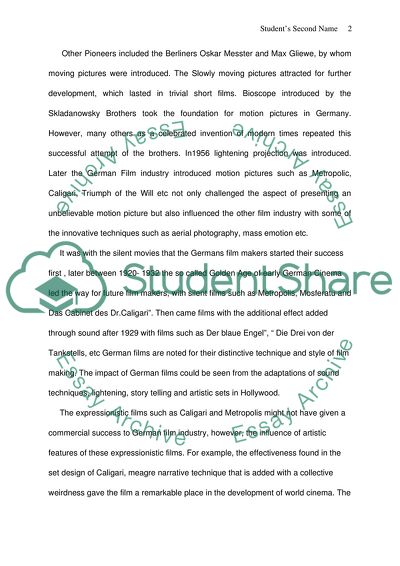Cite this document
(The Impact of German Film Industry on the Development of World Cinema Case Study, n.d.)
The Impact of German Film Industry on the Development of World Cinema Case Study. Retrieved from https://studentshare.org/visual-arts-film-studies/1707824-germany-on-screen-the-history-of-german-cinema
The Impact of German Film Industry on the Development of World Cinema Case Study. Retrieved from https://studentshare.org/visual-arts-film-studies/1707824-germany-on-screen-the-history-of-german-cinema
(The Impact of German Film Industry on the Development of World Cinema Case Study)
The Impact of German Film Industry on the Development of World Cinema Case Study. https://studentshare.org/visual-arts-film-studies/1707824-germany-on-screen-the-history-of-german-cinema.
The Impact of German Film Industry on the Development of World Cinema Case Study. https://studentshare.org/visual-arts-film-studies/1707824-germany-on-screen-the-history-of-german-cinema.
“The Impact of German Film Industry on the Development of World Cinema Case Study”. https://studentshare.org/visual-arts-film-studies/1707824-germany-on-screen-the-history-of-german-cinema.


